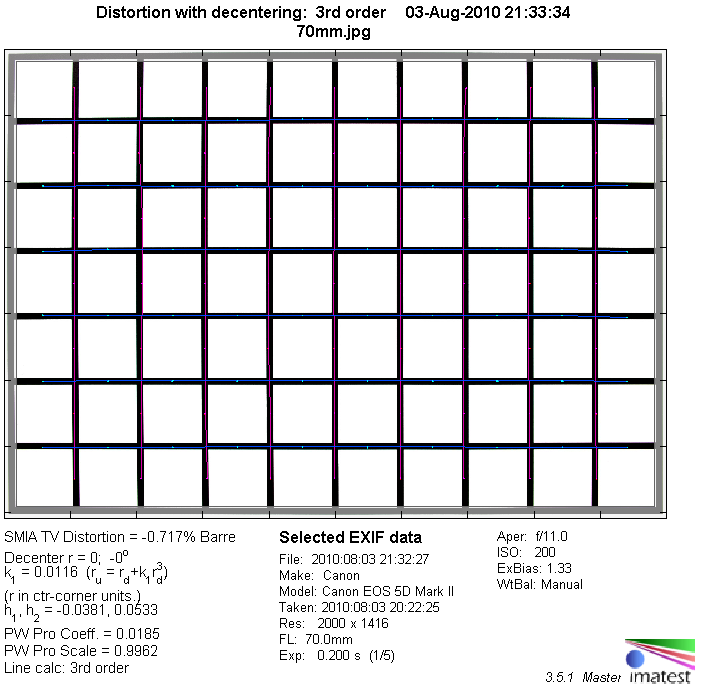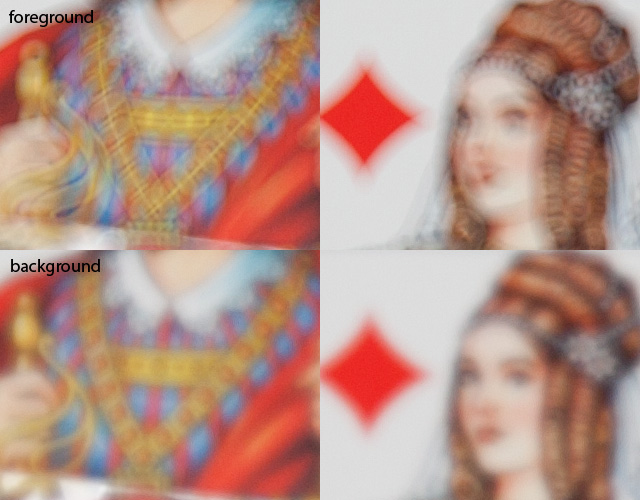|
Canon EF 70-300mm f/4.5-5.6 USM DO IS - Full Format Review / Test Report - Analysis |
|
Lens Reviews -
Canon EOS (Full Format)
|
|
Page 2 of 3

Distortion
The Canon EF 70-300mm DO IS shows the typical distortion characteristic of a standard tele zoom lens. It produces slight barrel distortion (~0.7%) at 70mm and slight pincushion distortion at 200mm (~1.1%) and 300mm (~1.4%).
|
Move the mouse cursor over the focal length text marks below to observe the respective distortion
|
| 70mm |
200mm |
300mm |

|
Vignetting
Light fall-off is often a problem when using lenses on a full format DSLR but the 70-300mm DO IS does a comparatively good job here. The amount of vignetting exceeds 1EV at max. aperture but we've really seen worse here and it's not really an issue anymore when stopping down just a little big.

MTF (resolution)
The resolution figures are pretty impressive at 70mm with a center performance varying around the very-good to excellent mark and good to very good borders/corners. At 200mm there's already a fairly pronounced quality penalty. The center is still very good but the borders are quite soft at f/5.6 although stopping down to f/8 resolves this problem. The center quality drops further to only good quality at 300mm f/5.6 and it's also advisable to go for f/8 which results also in a little boost in image contrast. The image contrast seems to be generally a bit lower compared to conventional lenses.
Please note that the MTF results are not directly comparable across the different systems!
Below is a simplified summary of the formal findings. The chart shows line widths per picture height (LW/PH) which can be taken as a measure for sharpness.
If you want to know more about the MTF50 figures you may check out the corresponding Imatest Explanations
Chromatic Aberrations
The DO element is supposed to have a superior control over lateral CAs according to Canon and we were indeed able to verify this in our lab. The average amount of border CAs varies around the 1 pixel mark at all focal length so it's usually nothing to worry about and lower/better compared to conventional 70-300mm lenses.

Chromatic Aberrations
DO lenses aren't really renowned for producing an excellent bokeh (quality of the out-of-focus blur). The DO element itself seems to have its fair share in this problem here - out-of-focus highlights have an "onion-like" inner structure. We've prepared a series of artificial highlight crops taken in the image center and at the borders. The border highlights loose their circular shape at max. aperture but this is pretty normal on full format images (due to vignetting).
 The next samples illustrate the out-of-focus behavior in the image foreground and background. You may notice that the foreground rendering is very busy whereas the background is very smooth.
The next samples illustrate the out-of-focus behavior in the image foreground and background. You may notice that the foreground rendering is very busy whereas the background is very smooth.

|